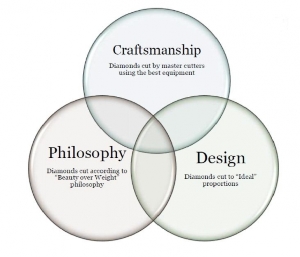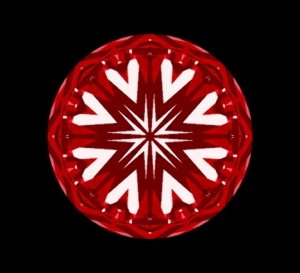The "perfect example" linked above is not a good one.
Pfunk wrote, "I am curious if someone could provide me images of diamonds that seem to have great numbers on paper, but have poor idealscope images that would translate to visual defects in real life?"
The visual effects of that slight windowing on that diamond would be incredibly marginal, and I would think it would undetectable to the unaided eye vs a diamond w/ those same proportions but without the windowing... at least the differences would not lead one to say unequivocally that the diamond has deficient "light performance" in real life.
In fact, if I remember correctly, sometime last year Sergey suggested that, in some circumstances, slight leakage can create a "bright flash" effect due to stereo vision and competing inputs ([one eye = flash] + [one eye = blank] ==> [extra bright flash]). There were some very cool examples posted in that thread.
Again, how noticeable this visual effect would be in real life vs a non-leakage diamond is unknown to me, but it certainly leads me to believe that small windowing such as the one shown in the linked diamond does not universally lead to "visual defects in real life."
Pfunk wrote, "I am curious if someone could provide me images of diamonds that seem to have great numbers on paper, but have poor idealscope images that would translate to visual defects in real life?"
The visual effects of that slight windowing on that diamond would be incredibly marginal, and I would think it would undetectable to the unaided eye vs a diamond w/ those same proportions but without the windowing... at least the differences would not lead one to say unequivocally that the diamond has deficient "light performance" in real life.
In fact, if I remember correctly, sometime last year Sergey suggested that, in some circumstances, slight leakage can create a "bright flash" effect due to stereo vision and competing inputs ([one eye = flash] + [one eye = blank] ==> [extra bright flash]). There were some very cool examples posted in that thread.
Again, how noticeable this visual effect would be in real life vs a non-leakage diamond is unknown to me, but it certainly leads me to believe that small windowing such as the one shown in the linked diamond does not universally lead to "visual defects in real life."







300x240.png)